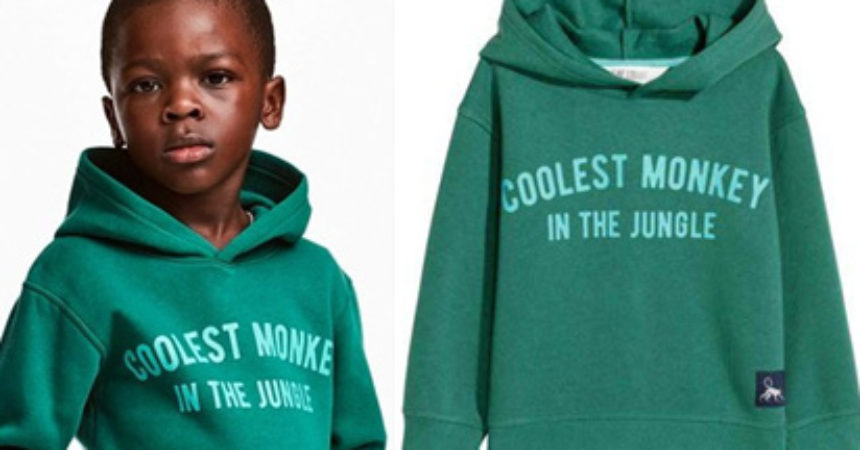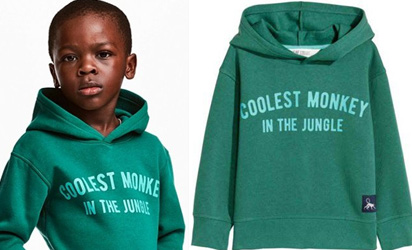
Sachs weighs in on H&M advertising snafu

Pictured is the offensive kid’s sweatshirt labeled “coolest monkey in the jungle” that was advertised with an African-American kid wearing it, that spark outraged over the world.
Photo special to the Outlook
By Kathryn Lewis
Outlook writer
H&M caused such an advertising gaffe that the retail clothing giant could face some struggles as it attempts to restore its image.
That’s according to Ron Sachs, CEO of Sachs Media Group, one of the nation’s top crisis management firms. He also said that H&M, which now faces the potential of a decline in sales and could take a hit to its public image, has to move swiftly to regain public trust.
H&M’s trouble stems from an image of a Black child wearing a hooded sweatshirt with the words “Coolest Monkey in the Jungle.”
“Here is a self-inflicted wound that they have caused, that has deeply damaged their brand and makes the company appear to be tone-deaf when it comes to the normal, everyday sensitivities to diversity issues,” Sachs said.
H&M has 4,351 stores around the world, with 468 of them in the United States. It has one Tallahassee store, located in Governor’s Square Mall.
The company has issued several apologies since causing public outrage over the inference of racism on the T-shirt.
Sachs said he doesn’t believe the wording on the T-shirt was intended, but it’s clear to him that sensitivity didn’t figure into H&M’s decision.
“They have created a controversy where none existed with their own brand,” Sachs said. “I think it’s going to affect their sales (and) it’s going to affect the esteem they’re held in.
“I think they have some major repair work to do. Not just with the Black community, but with the entire community of folks that they would like to respect their brand.”
Public figures around the country have been expressing their outrage, as are people who patronize H&M in Tallahassee.
“I feel like it was a racial term they used, because being that he’s a young Black child with a (hoodie) that says, ‘monkey,’ ” said JhaMia Nobles, a shopper at Governor’s Square. “It does go back in time to represent what they used to call us.”
During the past week, a number of celebrities, including NBA star LeBron James, rapper Diddy and singer The Weeknd have expressed their disgust with the image presented by H&M.
The racial perception of wording on the T-shirt also struck a chord with civil rights historian Larry Rivers. A professor at FAMU, Rivers echoed Sachs’ sentiment that sensitivity might not have been considered.
“The reason why a lot of this is happening is the proliferation of media,” Rivers said. “People feel like anything is acceptable now in this mass media environment that we have. And, sometimes when people think that anything’s acceptable, they can design things (and) wear things that they think are acceptable.
“When you look at the historical significance of the emblem or the symbol, you find that it is certainly most disconcerting.”
However, Sachs suggested that H&M should consider partnering with entities such as HBCUs and the United Negro College Fund to begin mending fences with Blacks. Whatever H&M does has to be done expeditiously because of the potential for lasting damage, he said.
He added: “What they have done is tragic, bizarre and senseless at the same time.”








